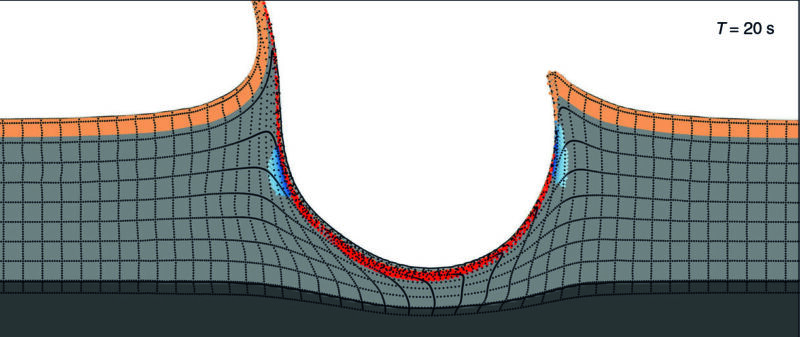Tracing the trajectory of a 66 million-year-old asteroid impact

Enlarge / How to make a big hole fast. (credit: Collins et al./Nature Communications)
You know that scene in every forensic crime drama where someone works out the angle the bullet was fired from and points back to the source? In the case of the Chicxulub asteroid impact and the end-Cretaceous mass extinction 66 million years ago, there's no mystery about the shooter. (Space did it.) But the trajectory is interesting for other reasons, and researchers have long been trying to trace the path back out of the crater off the Yucatan coast.
Unsurprisingly, 66 million years have taken their toll on the crater, so researchers have offered several very different answers. Did the asteroid hit from the southeast at a very low angle? Did it come from the southwest at a moderate angle? Many studies that needed to model the impact have simply defaulted to a 90-degree strike and avoided the whole argument. The details actually matter, though, and precisely which rocks get vaporized-and which climate-changing gases they release-depends on that impact angle.
A lot of new research on the crater has been published recently thanks to a major expedition that included drilling a rock core down through the crater's peak ring. (Impacts this violent leave a raised ring in the center rather than a single peak.) A new paper led by Imperial College London's Gareth Collins makes the latest contribution using model simulations to see what impact angle best matches the observed characteristics of the crater.
Read 9 remaining paragraphs | Comments